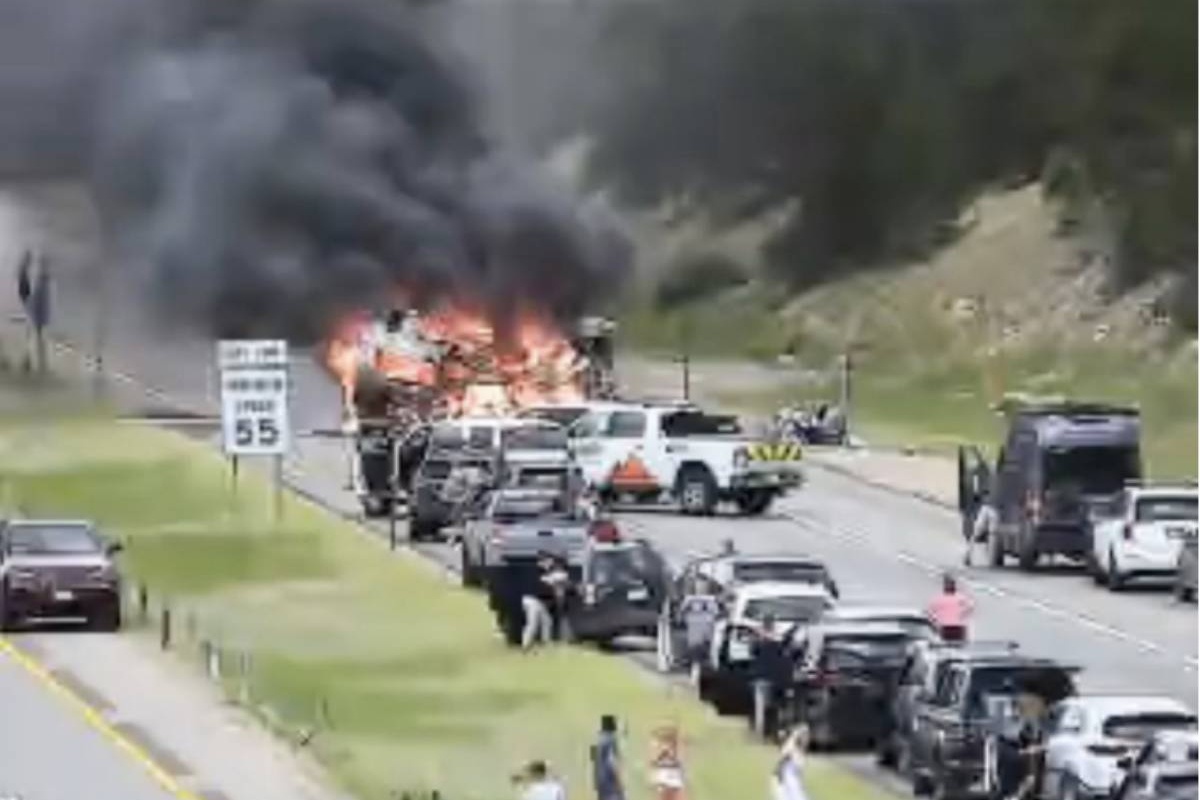
A Colorado research entity with a big name -- Center of Excellence for Advanced Technology Aerial Firefighting -- has an even bigger job; to find new techniques and technologies for fighting wildfires more efficiently and more safely.
The three-year-old center is researching whether wildfires can safely be fought at night, if products that make water "wetter" are helpful, how drones can be used to survey fires and deliver supplies, and how bluetooth technology might be used to improve communication among ground and aerial firefighting crews.
Center for Excellence director Melissa Lineberger said her team of eight researchers feels a sense of urgency because of the record 8 million acres that have burned in the West this season. But she told Colorado Matters host Ryan Warner the center is dedicated to making sure any new techniques and technologies have been fully researched and will be safe and effective.
Conversation Highlights [Edited For Clarity]
On the benefits of nighttime firefighting:
"We see it as sort of a long game for us because we want to make sure that we have all of the information and we're doing it intelligently before we make a recommendation to move forward with night operations. Some of the benefits are that the humidity is higher at night; the fire lays down, the fire behavior is different. So there's some opportunity there to attack the fire and to be really successful. And also if you're only fighting fire eight out of 24 hours you’ve got a lot of hours there that you could potentially be benefiting the firefighting effort."
On the risks of fighting wildfires at night:
"Firefighting aircraft fly pretty low and if you've ever seen a single-engine air tanker drop retardant they're flying much lower than you're expecting aircraft fly. The helicopters will fly below 500 [feet] above ground level and sometimes they'll fly as low as 150 feet -- with a hundred-foot long line on them. And so at night it's harder to identify some of those aviation hazards. You know, power lines and trees, unless the pilot is really familiar with the area in which they're flying. The night-vision goggles help but they can impact [a pilot’s] peripheral vision and their ability to see some of the things that they would be able to see during the day."
On the role unmanned aircraft can play:
"The options that we considered: Keep the status quo -- don't do it. We've [also] looked at all-hazards-capable night operations helicopters that we could use year-round. And then Lockheed Martin and Kaman have come together on a project called the K-MAX helicopter and it's a Type 1 helicopter, which means it's the biggest type that we use in wildland fire. We're currently using those in a piloted capacity, but they're developing a package that would make each of those manned aircraft optionally piloted. We can fly them in the configuration during the day with other aircraft with the pilot on board and then switch them and have them in optionally piloted mode at night. Those are expensive helicopters. We don’t want to crash them -- you do take the human-element risk out and so we’re definitely exploring that as well."
On using water enhancers:
"They’re commonly known as gels. When you see the aircraft in the sky, you see the red stuff coming out, right? You see the slurry and the mud -- they’re called all kinds of different things -- but that's retardant and its chemical makeup is designed to be dropped in front of the fire, in front of the head of the fire, so that it slows, it retards the fire’s growth. What these water enhancers or gels do is you actually drop them directly on the fire. They're called water enhancers because they actually enhance the property of water and so they keep the water wet longer. First, they’re thicker so it's easier to drop them on target. And second of all they make the wetness of the water last longer so that you can potentially drop it right on the fire and the fire gets put out or it gets cooled down enough so that you can get ground resources out there and it's safe for them to be around that fire.









